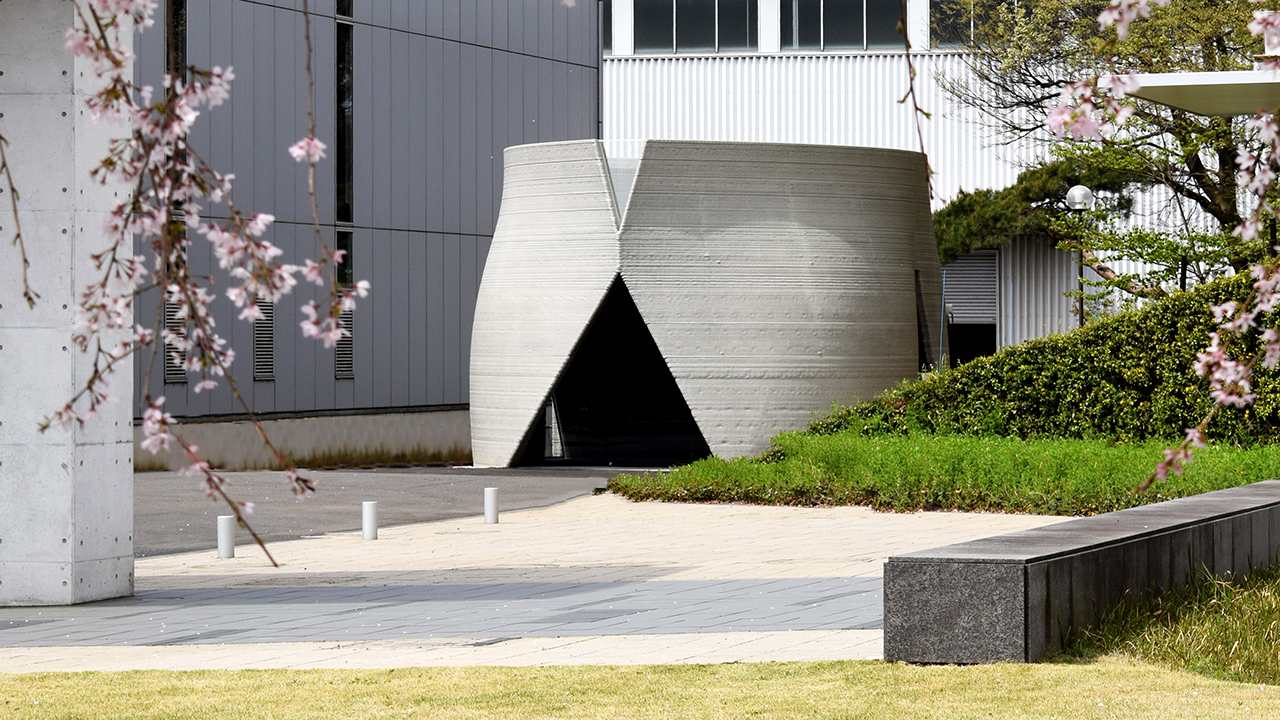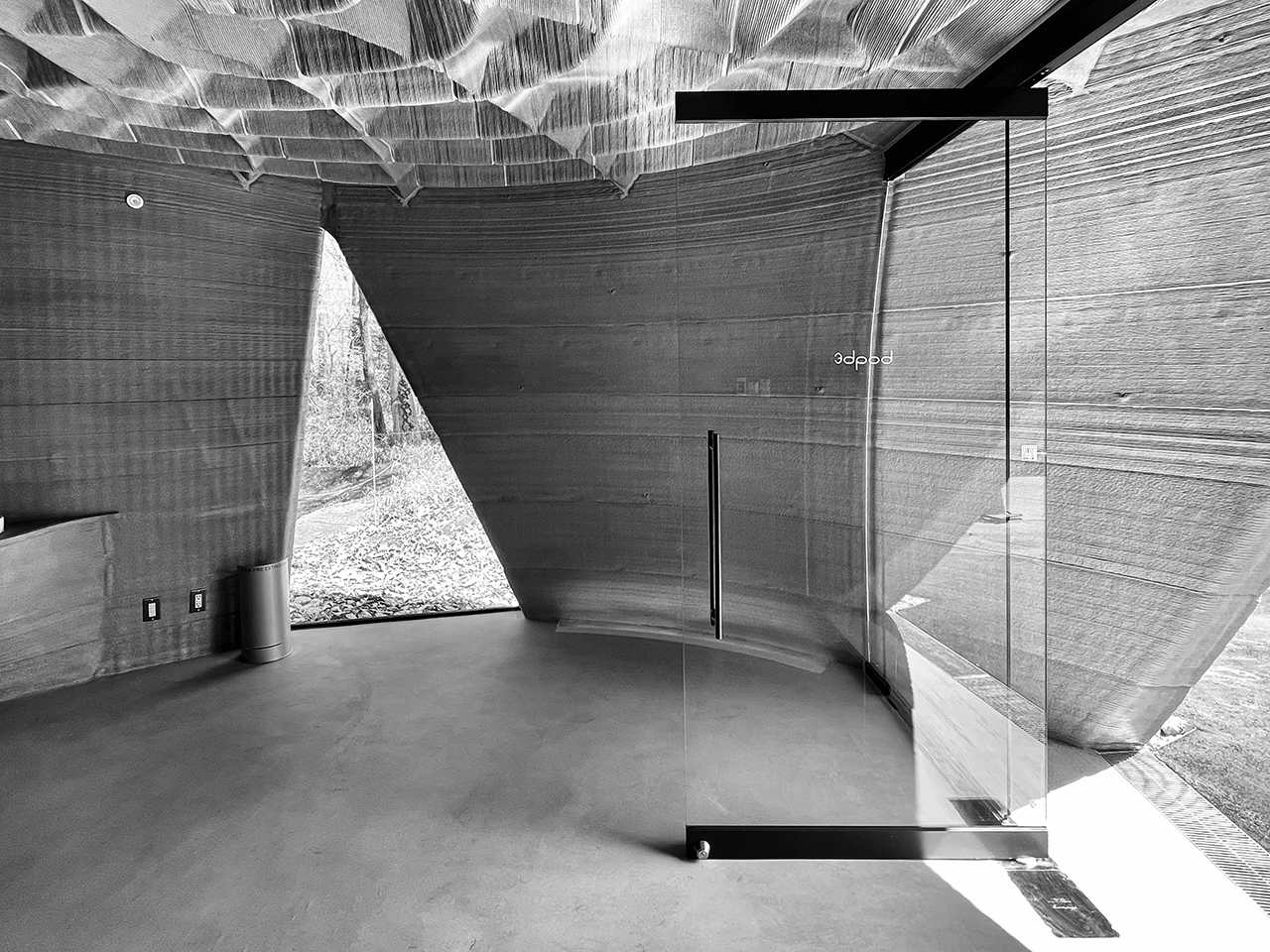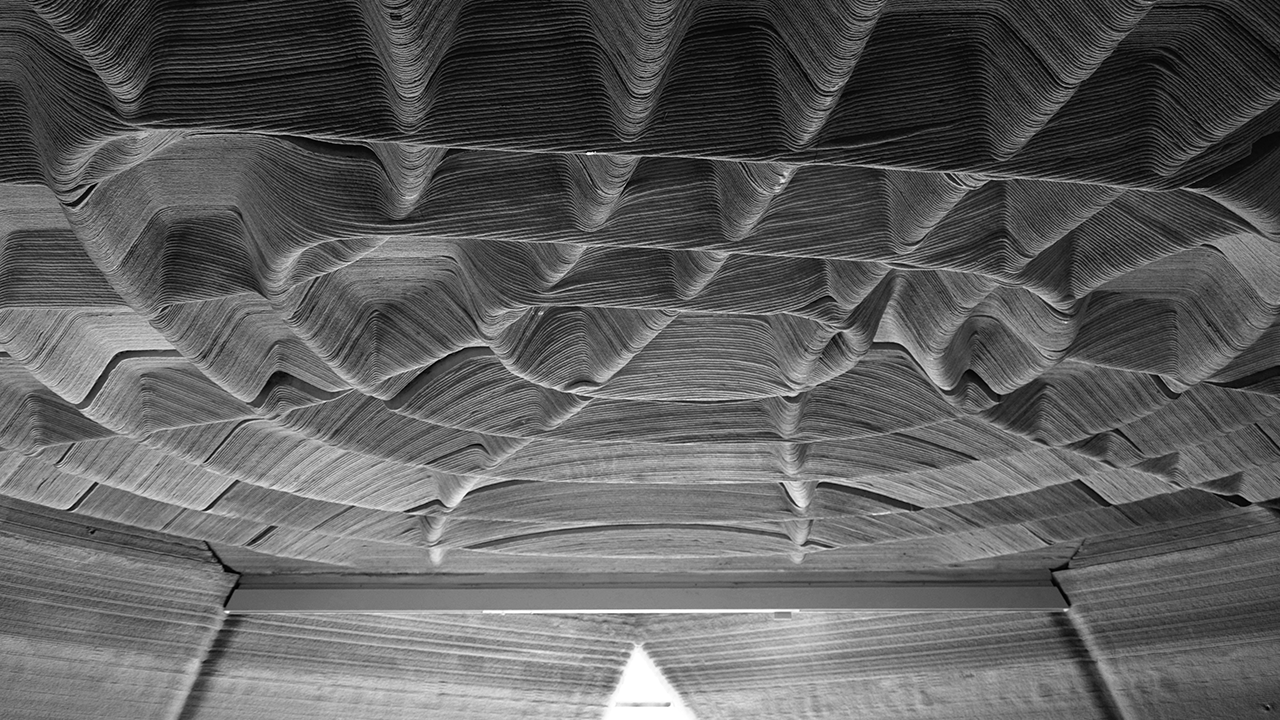3D-Printed Demonstration Building "3dpod™" Completed
First 3D-printed building in Japan to be certified by the Minister of Land, Infrastructure, Transport and Tourism
-
Others
Obayashi Corporation began construction of a building using a 3D printer at the Technology Research Institute in May 2022, and has now completed the "3dpod™" 3D-printed demonstration building.
The 3dpod is the first 3D-printed building made from cement-based materials in Japan to obtain certification from the minister of land, infrastructure, transport and tourism under the Building Standards Act. A 3D printer was used to create all the aboveground structure components, such as the walls and floors, and all walls were printed on site. In addition to utilities such as electricity, air conditioning and water supply, the interior of the building is insulated.



Obayashi began researching 3D printers for construction in 2014 and has made steady progress in research and development. Obayashi has developed structural design that use a special mortar for 3D printers(*1) that does not require rebars or steel beams and SLIM-Crete®(*2), ultra-high strength fiber-reinforced concrete, and in 2019, we produced a prototype of a shell-shaped bench for use in buildings and civil engineering structures. It attracted the attention of the industry as the largest 3D-printed structure in Japan at the time.
After this experimental mock-up prototype, we aimed for the practical application of 3D printers in the construction field. In May 2022, we started a project to construct a 3D-Printed Demonstration Building in accordance with building stipulations under the Building Standards Act. The 3dpod was completed in March 2023.
The completion of 3dpod evokes the future of architecture, unlike anything we have seen before. Obayashi will continue to research 3D printed construction using cementitious materials that can realize structures with complex designs, strength, and durability to meet diverse needs and open up the future of construction technology.
- *1 Special mortar for 3D printers
Denka Printar® is a mortar made of a special cementitious material developed by Denka Company Limited. It has the strength and durability required for buildings and civil engineering structures, as well as thixotropic properties that do not lose its shape even right after discharge, allowing parts to be made without formwork
- *2 SLIM-Crete
Obayashi's proprietary mortar material that hardens at room temperature and attains a compressive strength of 180 N/mm², a tensile strength of 8.8 N/mm², and a bending strength of 32.6 N/mm². In addition to high tensile and flexible strength, SLIM-Crete also offers high tensile toughness and can be used as building structure without reinforcement. With its slump flow of approximately 260 mm and self-compacting property, it can be used to densely fill 3D curved surface casting molds made with special mortar for 3D printers

